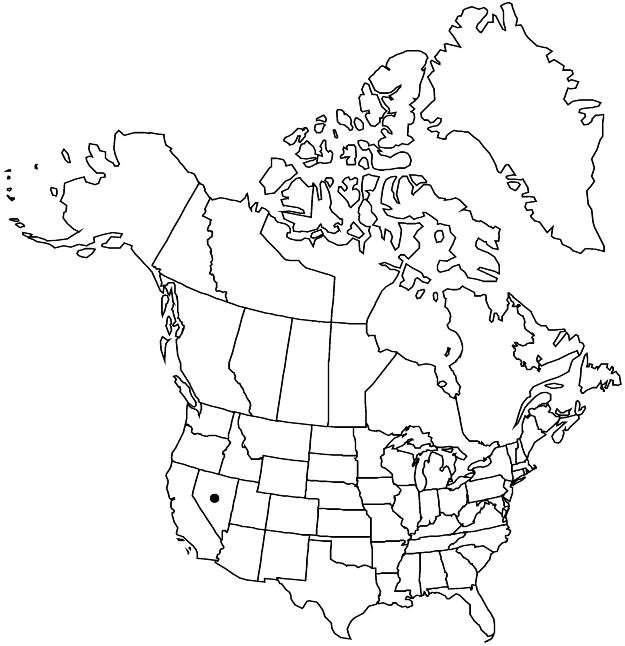Mentzelia candelariae
Phytologia 55: 281, figs. 1, 3. 1984.
Plants biennial, candelabra-form. Stems solitary, erect, straight; branches distal, distal longest, antrorse, upcurved; hairy. Leaves: blade 26–74 × 6–19.2 mm, widest intersinus distance 4.5–11.4 mm; proximal obovate, oblanceolate, or lanceolate, margins serrate, teeth 8–14, slightly antrorse, 0.6–4.5 mm; distal elliptic to lanceolate, base not clasping, margins serrate, teeth 6–12, slightly antrorse, 1.3–4.1 mm; abaxial surface with simple grappling-hook, complex grappling-hook, and occasionally needlelike trichomes, adaxial surface with simple grappling-hook and needlelike trichomes. Bracts: margins entire. Flowers: petals golden yellow, (6.1–)7.3–10 × 1.6–3 mm, apex acute, glabrous abaxially; stamens golden yellow, 5 outermost not petaloid, filaments linear to narrowly spatulate, not clawed, 4–8 × 0.7–1.5 mm, with anthers, second whorl with anthers; anthers straight after dehiscence, epidermis smooth; styles 3.7–7 mm. Capsules cup-shaped to cylindric, 10.4–16 × 6.6–9 mm, base tapering or rounded, not longitudinally ridged. Seeds: coat anticlinal cell walls straight, papillae 6–16 per cell. 2n = 22.
Phenology: Flowering May–Jun.
Habitat: Sparsely vegetated washes, steep slopes, hilltops, gravelly, clayey, and sandy soils composed of volcanic ash.
Elevation: 1100–2000 m.
Discussion
Mentzelia candelariae is known from Churchill, Esmeralda, Mineral, Nye, and Pershing counties.
Selected References
None.
